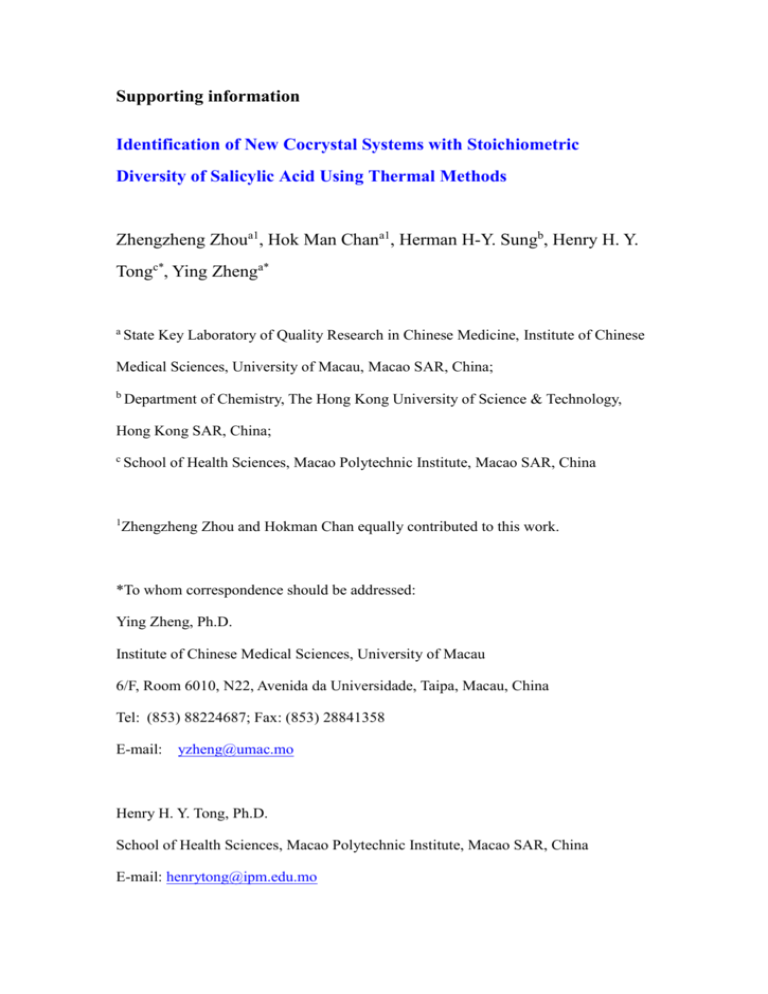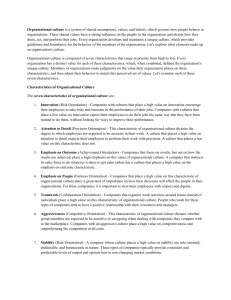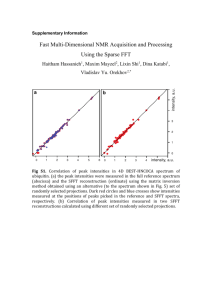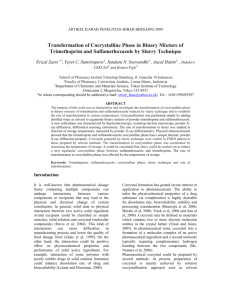Supporting information Identification of New Cocrystal Systems with
advertisement

Supporting information Identification of New Cocrystal Systems with Stoichiometric Diversity of Salicylic Acid Using Thermal Methods Zhengzheng Zhoua1, Hok Man Chana1, Herman H-Y. Sungb, Henry H. Y. Tongc*, Ying Zhenga* a State Key Laboratory of Quality Research in Chinese Medicine, Institute of Chinese Medical Sciences, University of Macau, Macao SAR, China; b Department of Chemistry, The Hong Kong University of Science & Technology, Hong Kong SAR, China; c School of Health Sciences, Macao Polytechnic Institute, Macao SAR, China 1 Zhengzheng Zhou and Hokman Chan equally contributed to this work. *To whom correspondence should be addressed: Ying Zheng, Ph.D. Institute of Chinese Medical Sciences, University of Macau 6/F, Room 6010, N22, Avenida da Universidade, Taipa, Macau, China Tel: (853) 88224687; Fax: (853) 28841358 E-mail: yzheng@umac.mo Henry H. Y. Tong, Ph.D. School of Health Sciences, Macao Polytechnic Institute, Macao SAR, China E-mail: henrytong@ipm.edu.mo The VT-XRPD results The phase purity and cocrystal formation were characterized by XRPD based on new characteristic peaks and the presence or absence of the characteristic peaks of corresponding individual components. All of the raw materials and their binary mixture (molar ration at 1:1 and 1:2 SA-BZD) were prepared by liquid-assisted grinding with ethanol. The diffraction patterns of all materials are shown in Figure 1S. The characteristic peak of SA and BZD is clearly at 2θ of 11.1∘and 8.1∘, respectively. In the diffraction pattern for 1:1 and 1:2 SA-BZD grinding materials, two new characteristic peaks can be observed at 2θ of 18.7∘ and 24.0∘, respectively. No peak indicative of the presence of either free SA or BZD was observed. These characteristic peaks were utilized to further investigate the step of cocrystals’ formation from melt by variable-temperature XRPD (VT-XRPD). Various molar ratios (1:1 and 1:2) of the binary mixture were heated form room temperature and characterized by XRPD at 5°C intervals. The characteristic peak for 1:1 and 1:2 cocrystals (at 2θ of 18.7∘and 24.0∘) appeared at 95°C, and the peak intensities increased with temperature (Figure 2S). The characteristic peaks for both cocrystals disappeared at 110°C due to the detection limit. Fig. 1S. XRPD patterns of liquid assisted grinding for SA, BZD, SA-BZD (1:1) and SA-BZD (1:2). Fig. 2S. VT-XRPD patterns obtained from a physical mixture of SA and BZD (1:1); the sample was heated to (a) room temperature, (b) 90 °C, (c), 95 °C, (d) 100 °C, and (e) 105 °C. 1 (11.1∘ 2θ) and 2 (8.1∘ 2θ) are the characteristic peaks of SA and BZD (top, α); 3 (18.7∘2θ) and 4 (24.0∘2θ) are the characteristic peaks of SA-BZD (1:1) and SA-BZD (1:2) (bottom, β). Similar to previous systems, the phase purity and cocrystal formation was characterized by XRPD. All of the SA and ISN and their binary mixture were treated by liquid assisted grinding with ethanol. The characteristic peak of ISN was at 2θ of 20.7∘. Two new characteristic peaks with 2θ of 21.8∘ and 15.5∘ appeared in 1:1 and 2:1 molar ratios of SA-ISN grinding material (Figure 3S). Fig. 3S. XRPD patterns of liquid assisted grinding for SA, ISN, SA-ISN (1:1) and SA-ISN (2:1). The VT-PXRD results of a 1:1 SA-ISN physical mixture are shown in Figure 4S. The equimolar mixture showed characteristic peaks for 1:1 and 2:1 cocrystals at 100°C. The peak intensity of the 2:1 SA-ISN cocrystal achieved a maximum level at 105°C. Conversely, the 1:1 cocrystal peak intensity increased with temperature, and the maximum peak intensity can be observed after the characteristic peak of SA and ISN disappeared. Fig. 4S. VT-XRPD patterns obtained from a physical mixture of SA and ISN 1:1; the sample was heated to (a) room temperature, (b) 100 °C, (c) 105 °C, (d) 110 °C, (e) 115 °C, (f) and 120 °C. 1 (11.1∘ 2θ), 2 (20.7∘ 2θ), 3 (21.8∘ 2θ) and 4 (15.5∘ 2θ) are the characteristic peaks of SA, ISN, SA-ISN (1:1) and SA-ISN (2:1). Crystal structure information of SA-ISN (2:1) The crystal structure of SA-ISN (2:1) belongs to a triclinic crystal system, P space group, with four SA and two ISN molecules in the asymmetric unit. One SA molecule alternatively links one ISN molecule through N2-H··O5 and O6-H··O7 inter-molecular hydrogen bonds to form an R22 8 ring and through O4-H··O5 intra-molecular hydrogen bond to form an S (6) ring, while connecting to the other SA molecule via N2-H··O3 inter-molecular hydrogen bonds. Another two SA and one ISN molecules link together similarly with the above mentioned interactions; an R22 8 ring was formed by one SA and one ISN molecule through N4-H··O12 and O13-H··O14 inter-molecular hydrogen bonds, and an S (6) ring was formed via O11-H··O12 intra-molecular hydrogen bonds, while connecting the other SA via N4-H··O10 inter-molecular hydrogen bonds (Fig. 5Sa). Eventually, these two synthons formed a dimer. The two dimers are further connected to another SA molecule through N 3)-H··O hydrogen bonds to form a 2D sheet (Fig. 5Sb). The 2D sheets are further connected to each other via inter-sheet π··π interactions (Fig. 5Sc). (a) (1, (b) (c) Fig. 5S (a) Hydrogen bond interactions, (b) 2D sheet, and (c) 3D structure of SA-ISN (2:1)








